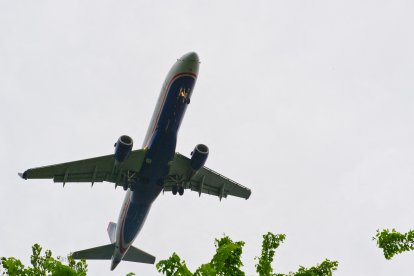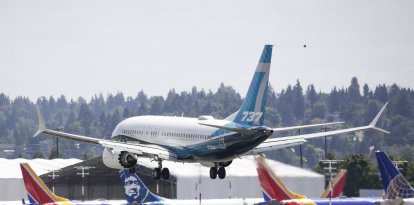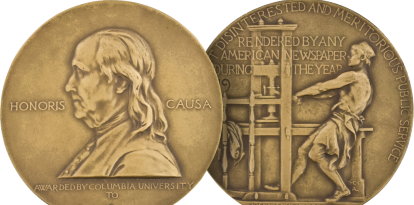Everything you need to know about a Real ID: The main changes for traveling in the United States as of May 7
The document will apply to everyone over the age of 18 and can also be used to enter federal facilities.

A plane taking off from Ronald Reagan International Airport/Karen Bleier.
Next May 7 will change the dynamics for travel within the United States, given that the Real ID will go into effect. This is an identification document, whose main purpose is to increase security at airports, federal buildings and nuclear power plants. It will be mandatory throughout the country for all individuals over 18 years of age.
This new document responds to the security standards set by the REAL ID Act of 2005, which seeks to reduce fraud in the issuance of documents and prohibits certain federal agencies from accepting ID cards that do not meet certain requirements.
A REAL ID will only be issued to US citizens, lawful permanent residents and aliens protected under Deferred Action programs such as DACA and Temporary Protected Status (TPS). Although the initial goal was to start implementing it in mid-2008, the Department of Homeland Security (DHS) precised that it has been delayed over the years. The last thwarted target was 2023, but it was delayed by the pandemic.
What is a Real ID and how does it change the way people move around the United States?
It is a document in accordance with standards set by Congress in 2005 and will be required for the following activities: boarding a commercial airplane for domestic flights, visiting federal buildings such as courthouses and prisons, visiting military bases and nuclear power plants.
"The Act established minimum security standards for driver's licenses and identification cards issued by states and prohibits certain federal agencies from accepting for official purposes licenses and identification cards from states that do not meet these standards," explained from the DHS.
In the absence of a Real ID, Transportation Security Administration (TSA) agents will accept the following documents, since they do meet the identification requirements:
- US passports
- Enhanced Driver's Licenses (EDL)
- Permanent resident cards
- Department of Defense IDs, trusted traveler credentials (Global Entry, SENTRI, NEXUS, FAST), among others
- An acceptable photo ID issued by a federally recognized Indian tribal nation
- US merchant mariner's credential
- Veterans Health Identification Card (VHIC)
If you have any of these documents and want to check if it is valid, please note that it must have one of the following symbols in the upper right hand corner: a gold star (alone or with a circle behind it), a black star (alone or with a circle behind it) or a gold bear with a star (only in California).

Society
Noem reopens Victims of Immigration Crime Engagement Office, closed by Biden
Diane Hernández

How to obtain a Real ID?
According to the DHS, citizens should visit the digital page of the Department of Motor Vehicles and Motor Vehicles (DMV) of the state where they live and find out the established requirements. At a minimum, they will need to provide documents showing full legal name, date of birth, Social Security number, legal status and two proofs of primary residence address.
"States may impose additional requirements, so check your state's driver licensing agency's website before visiting in person for additional guidance and assistance," the agency said.
In name change cases, it may be necessary to provide additional documentation, such as a marriage certificate or a court decree of name change.
With all these data, it will be necessary to follow the steps on the website and complete the corresponding application form. However, the process must be carried out at the corresponding state DMV officeand the authorities recommend scheduling an appointment to minimize the waiting time. The process involves having a photograph taken, which will appear on the document, as well as payment of a fee that varies by state.
Once the entire process is completed, the Real ID will be delivered by mail. For more information, see the Department of Homeland Security website.
What will happen to undocumented immigrants?
According to the new regulations, these cards can only be issued to US citizens, lawful permanent residents and aliens protected under Deferred Action programs such as DACA and Temporary Protected Status (TPS).
"But those immigrants who entered the country under the CBP One (about 930,000) and Humane Parole (CHNV, about 5390,000) programs during President Joe Biden's administration, before boarding a flight should seek legal advice because the benefits of both programs were canceled by President Trump's administration," immigration attorney Alex Galvez told Univision.
The Trump administration's stance continues to be debated in the courts.
RECOMMENDATION























